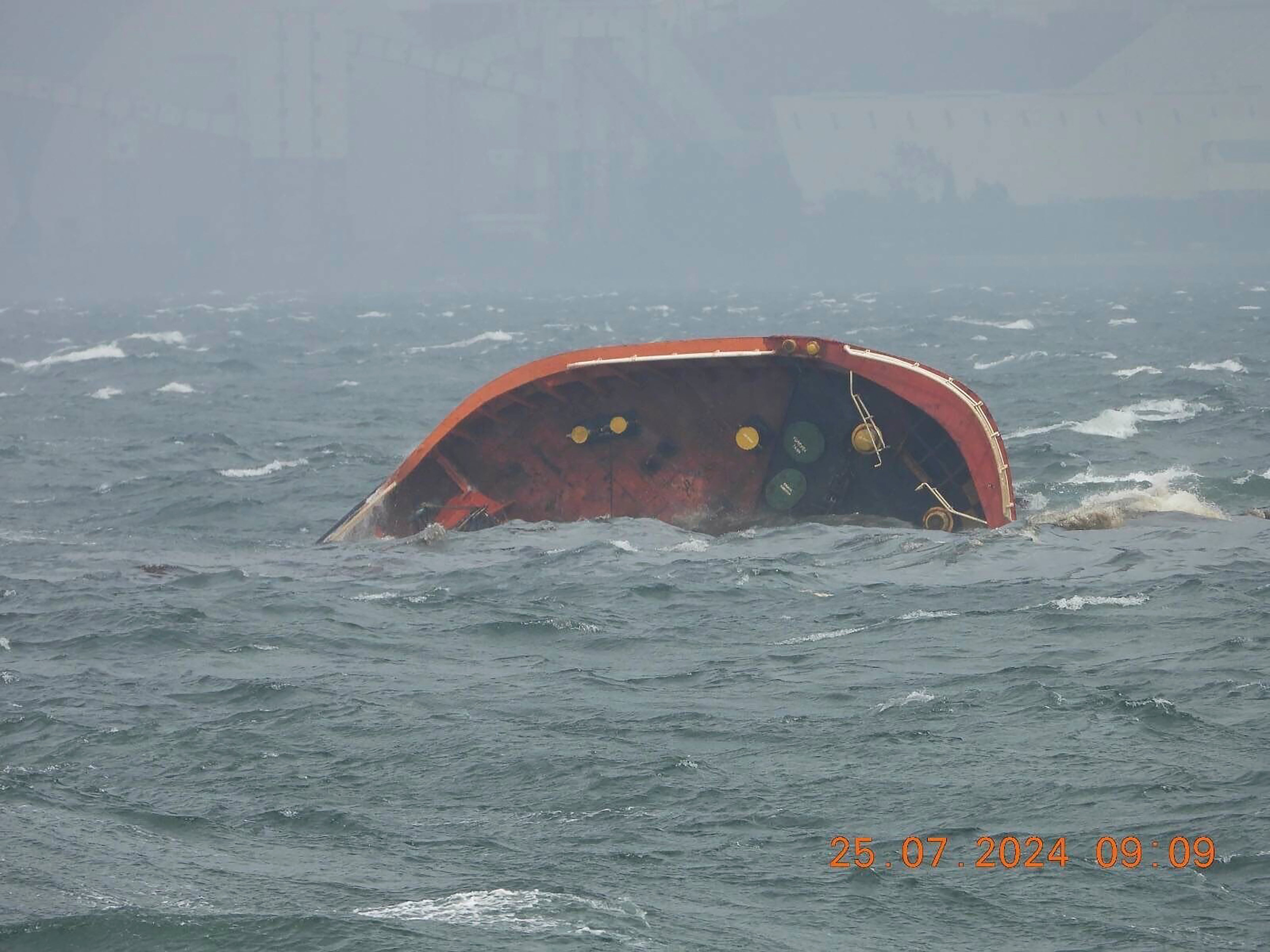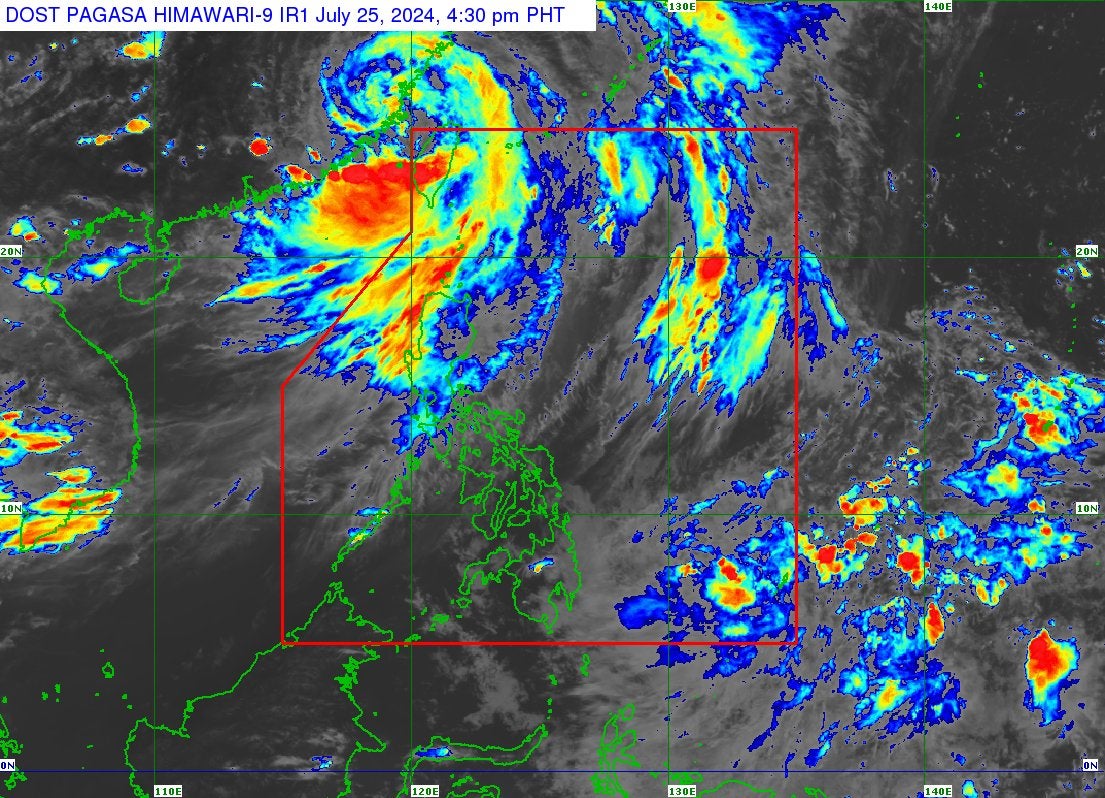Taiwan races to rescue sailors stranded by Typhoon Gaemi as China warns of wide impacts: Live updates
More than 290,000 people in China have been forced to flee their homes
Taiwan’s coast guard is working to rescue dozens of sailors stranded off its southern coast after Typhoon Gaemi sank one freighter and left eight others stranded.
The typhoon flooded streets, knocked out power and killed at least five people in Taiwan before heading to China. It earlier killed 22 people in the Philippines.
Seventy-nine crew members are awaiting rescue on the eight freighters that were stranded, the coast guard said. Nine people were rescued earlier today from a Togo-flagged freighter stranded on a beach.
Typhoon Gaemi made landfall in China on Thursday evening, after officials issued widespread flood warnings and evacuations.
More than 290,000 people have been forced to flee their homes in Fujian while emergency responses were put in place and flights and trains have been cancelled.
Gaemi is forecast to unleash intense rainfall in at least 10 Chinese provinces, including the capital Beijing, in the coming days, areas that have already been soaked by days of rainfall.
Gaemi has drawn comparisons with Typhoon Doksuri last year, which triggered historic flooding as far north as Beijing and caused nationwide losses of nearly $30bn.
Death toll rises to 22 in Philippines
The death toll from adverse weather brought by Typhoon Gaemi rose to 22 in the Philippines today as a result of more drownings and landslides.
Authorities continue to face challenges in rescue and clean up operations, and at least three people are still missing, according to police.
Gaemi, called Carina in the Philippines, did not make landfall in that archipelago but enhanced its seasonal monsoon rains.
In the densely populated region around the Philippine capital, government work and school classes were suspended after rains flooded many areas.
Roads were inundated, houses of muddied and people were seen wading through waist deep water in and around Manila.
The storm’s effects were expected to continue into Friday as it moved in a northwestern direction toward mainland China.
Taiwan sees flooding and landslides from Typhoon Gaemi
Taiwan has seen flooding in low-lying areas, along with landslides and damage to homes and shops after Typhoon Gaemi made landfall on the island.
Offices and schools in Taiwan were closed for the second consecutive day on Thursday and people were urged to stay home and away from the coastline.
Read more:

Taiwan sees flooding and landslides from Typhoon Gaemi, which caused 22 deaths in the Philippines
Typhoon Gaemi mapped: Storm heads for China after pounding Taiwan and Philippines
A powerful typhoon is churning towards the southeastern coast of China after pounding Taiwan and flooding the Philippines.
Typhoon Gaemi, also known as Typhoon Carina in the Philippines, made landfall in Taiwan in the early hours of Thursday as the worst storm in eight years.
The typhoon was moving over the Taiwan Strait on Thursday towards mainland China’s Fujian province, where it is expected to make landfall later, bringing more strong winds and downpours to a country already hit hard by weeks of extreme rain and deadly flooding.
See the path of the typhoon here:

Typhoon Gaemi mapped: Storm heads for China after pounding Taiwan and Philippines
How Typhoon Gaemi's movement surprised experts
Typhoon Gaemi's unexpected behaviour before slamming into Taiwan surprised many experts.
The typhoon was originally moving directly toward the northeastern coast of Taiwan.
But radar data showed that instead of hitting the coast immediately, Gaemi performed a full loop just offshore.
This means that instead of hitting the coast immediately, it circled around the area before eventually making landfall.
This unusual movement captured the attention of meteorologists and weather experts around the world.
Nahel Belgherze, who shared videos and updates about extreme weather events on X, called it "absolutely wild stuff".
The reason behind this unexpected loop is Taiwan's rugged and mountainous terrain. The island's mountainous landscape can significantly influence the path of typhoons, causing them to alter their course or slow down.
In Gaemi's case, the interaction with the mountainous geography led to its looping pattern, deviating from its initial trajectory.
This phenomenon is not unprecedented; similar looping patterns have been observed with other typhoons affecting Taiwan. The island's unique geography often causes these dramatic changes in storm behaviour, adding an extra layer of complexity to forecasting and tracking such powerful weather systems.
Hurricanes vs Typhoons: What is the difference?
Some tropical storms are called hurricanes while others are called cyclones and typhoons. Why?
The answer lies in their geographical location.
Hurricanes form in the Atlantic Ocean or the northeastern Pacific Ocean, typically impacting the Americas. In contrast, typhoons occur in the northwestern Pacific Ocean, affecting countries like Japan, the Philippines, and China.
Tropical storms in the South Pacific and Indian Ocean regions are simply called cyclones.
Despite the different names, hurricanes and typhoons are both tropical cyclones. They develop over warm ocean waters and can cause destruction through high winds, heavy rainfall, and storm surges.
But the primary distinction between them is their region of formation, not their nature or intensity.
The terminology has historical and cultural origins. The term "hurricane" is derived from "Huracan," the Carib god of evil, while "typhoon" comes from the Chinese "tai fung," meaning "great wind," with additional influences from Greek and Arabic.
These tropical storms are measured by similar, but different scales, based on which agency is monitoring them. Hurricanes are categorised by numbers on the Saffir-Simpson Hurricane Wind Scale, which measures wind speed and potential damage.
Typhoons are typically measured using the Japan Meteorological Agency (JMA) Tropical Cyclone Intensity Scale and the Hong Kong Observatory's (HKO) Typhoon Scale, which measures them in categories like tropical depression (weakest), storm, severe storm and superstorm.
Regardless of their differences, both hurricanes and typhoons can reach similar levels of intensity and are equally capable of causing widespread devastation.
Aerial survey shows Philippines oil spill is over 2 miles long
An aerial survey shows the oil spill off Manila Bay is about 3.7 kilometres (2.3 miles) long.
The Philippines Coast Guard was working to determine whether the vessel was still leaking oil – in what could be a major spill – after it rescued 16 of 17 crew members in a night time operation, officials said.
The tanker Terra Nova left Bataan province en route to the central province of Iloilo with over 1.4 million litres (370,000 gallons) of industrial fuel oil stored in watertight tanks when it got buffeted by huge waves and took on water.
The crew struggled to steer the tanker back to port but it eventually sank shortly after midnight, coast guard spokesperson Rear Admiral Armando Balilo said, citing statements from surviving crew members.

'Big danger' oil spill could affect Manila
There's a "big danger" Manila's shoreline could be affected by the oil spill, warns coast guard spokesperson Rear Admiral Armando Balilo.
"There's a big danger that Manila would be affected, its shorelines, if the fuel leaks because this happened within Manila Bay. It's part of the contingency we're preparing for," Mr Balilo said.
"The effect on the marine environment would not be good."
Mr Balilo compared the magnitude of the oil spill to one caused by the sinking of another Philippine oil tanker, which was carrying much less fuel oil cargo, in February last year off Oriental Mindoro province north of Manila.
That spill took about three months to contain, caused massive damage to coral reefs and mangroves in a region known for its rich biodiversity, and affected tens of thousands of fishermen and beach resorts in at least six provinces.
Manila's shoreline is a major tourism and business hub, where the main seaport, a historic public park, the US Embassy and upscale hotels and restaurants are located.
Land reclamation efforts are also underway in the bay to create space for entertainment and tourism complexes with casinos. The bay for years has been notorious for its pollution but famous for its picturesque sunsets.
Typhoon Gaemi crosses Taiwan strait
Typhoon Gaemi has crossed Taiwan strait and it is looming over China's China's coastal Fujian province now.
Gaemi would be the biggest typhoon to hit China's eastern seaboard this year, with its spiralling cloud-bands spanning most of the Western Pacific Ocean and fuelling severe weather from the Philippines to Japan's Okinawa islands.

ICYMI: China activates emergency plans as Typhoon Gaemi moves closer
Chinese weather forecasters said Gaemi will pass through Fujian province later on Thursday and head inland, gradually moving northward with less intensity.
But weather forecasters are expecting heavy rain in many areas as it tracks north.
Government officials have already prepared for heavy rain and flooding, raising advisories and warnings in the coastal provinces of Fujian and Zhejiang.
In Fujian, government officials have relocated about 150,000 people, mainly from coastal fishing communities, state media reported.
As gale force winds picked up, officials in Zhoushan in Zhejiang province suspended passenger waterway routes for up to three days.
Most flights were cancelled at airports in Fuzhou and Quanzhou in Fujian, and Wenzhou in Zhejiang, according to the VariFlight app.
Guangzhou rail officials suspended some trains that pass through typhoon-affected areas, according to CCTV.
Meanwhile, north China is experiencing heavy rain from summer storms around a separate weather system.
Officials in capital Beijing upgraded and issued a red warning late on Wednesday night for torrential rain expected through most of Thursday, according to Chinese state media.
Some areas have already experienced heavy rain and emergency plans were activated, with more than 25,000 people evacuated, according to Beijing Daily.
Some train services were also suspended at the Beijing West Railway Station, state media said.
The Beijing Fangshan District Meteorological Observatory expects that by 10am (2am GMT) many parts of the city will have more than 150mm (6 inches) of rainfall in six hours, and in some other areas more than 200mm (8 inches) in 24 hours, state television reported.
Heavy rain over China predicted to last a week
Typhoon Gaemi is expected to bring heavy to very intense rains over vast swathes of China from Thursday, the water resources ministry warned.
The rains are expected to last for a week, fuelled by the typhoon’s abundant moisture, it added.
China’s National Meteorological Centre has issued a red alert, the highest level, according to Xinhua.
Emergency responses were put in place and flights and trains have been cancelled in Fujian as the typhoon is expected to bring heavy rainfall and gale force winds to parts of southeast China that have already been soaked in rain for days.




Join our commenting forum
Join thought-provoking conversations, follow other Independent readers and see their replies
0Comments